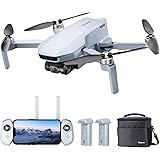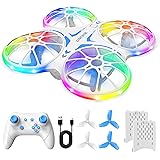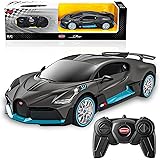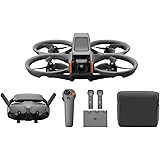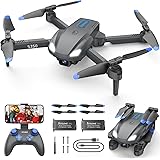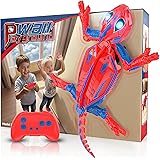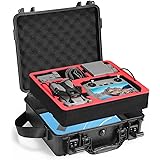Unpacking the Y3 Tricopter Configuration: An Expert’s Guide to the KK2.1 Evolution Build
The world of DIY drones offers an exciting frontier for hobbyists and seasoned builders alike. As showcased in the accompanying video, the Y3 tricopter presents a unique balance of agility and efficiency, standing out from its more common quadcopter counterparts. This specific build, featuring a Y3 Turningy frame paired with the robust KK2.1 Evolution flight controller, provides an excellent blueprint for understanding the intricacies of three-motor aerial platforms.
Diving deep into the configuration, we’ll explore each critical component, analyzing its role and the rationale behind its selection for optimal flight performance. For enthusiasts looking to replicate or innovate upon such a design, a detailed understanding of these specifications is paramount.
1. The Distinct Advantages of the Y3 Tricopter Platform
The Y3 tricopter, with its characteristic three-motor layout and a servo-controlled rear motor for yaw authority, offers a compelling alternative in the multirotor landscape. Unlike quadcopters that achieve yaw by differential motor thrust, the Y3’s mechanical yaw mechanism provides a direct and often more precise control feel.
This design choice can lead to slightly higher efficiency due to one fewer motor and ESC, potentially extending flight times, especially in configurations prioritizing endurance. Its distinct flight signature, often described as more akin to a helicopter, appeals to pilots seeking a unique flying experience and a platform less susceptible to propeller wash interference compared to an X or H-frame quadcopter.
2. Decoding the Critical Component Selections for This Y3 Tricopter Build
A successful Y3 tricopter build, like the one highlighted, hinges on a harmonious selection of components. Each part plays a vital role in the overall performance, stability, and flight characteristics of the drone. Let’s break down the specifications seen in this particular “Y3 Turningy” setup:
Motors: Rctimer 750kv
The Rctimer 750kv motors are a solid choice for a tricopter running larger propellers. The “kv” rating, or kilovolts per minute, indicates the motor’s RPM per volt when unburdened; a 750kv motor will spin at 750 RPM for every volt applied. This relatively low KV is ideal for swinging large, efficient propellers, prioritizing thrust and efficiency over raw speed, a common goal for tricopters aiming for stable, longer flights.
Propellers: Fiber 13×5
Complementing the 750kv motors are 13×5 fiber propellers. The ’13’ denotes the propeller’s diameter in inches, and ‘5’ represents the pitch, meaning that for one revolution, the propeller would theoretically move forward 5 inches through a solid medium. These large, high-pitch props are perfectly matched with the low KV motors to generate substantial thrust at lower RPMs, contributing significantly to the approximately 5 minutes of flight time observed.
The fiber construction provides a good balance of rigidity and durability, crucial for maintaining aerodynamic efficiency and withstanding minor impacts. Optimal propeller selection is a critical factor for maximizing flight time and overall efficiency for any Y3 tricopter.
ESCs: 30amp
Electronic Speed Controllers (ESCs) convert the signals from the flight controller into variable power for the motors. The 30amp ESCs used in this Y3 tricopter configuration provide ample current overhead for the Rctimer 750kv motors, especially when driving 13×5 propellers on a 3S battery. It’s crucial to select ESCs with a current rating significantly higher than the expected maximum motor draw to prevent overheating and ensure reliable operation, a best practice evident here.
Flight Controller: KK2.1 Evolution
The KK2.1 Evolution is a highly regarded, user-friendly flight controller known for its simplicity and onboard LCD screen, allowing for field adjustments without a computer. Its direct control over PWM signals for motors and servo makes it particularly well-suited for tricopter configurations, where a dedicated servo manages the yaw axis. The “default” settings indicated in the video often serve as a stable starting point for maiden flights, providing a foundation for subsequent PID tuning.
Servo: Corona Digital 12g
For Y3 tricopters, the servo is arguably as critical as the motors, as it provides the primary yaw control. A Corona Digital 12g servo is an excellent choice for this application. Digital servos offer superior precision, faster response times, and better holding power compared to their analog counterparts, which are essential for maintaining stable yaw authority and handling gusts of wind effectively. The 12g weight indicates a lightweight yet robust unit suitable for this drone class.
Receiver & Radio: X8R FrSky and Taranis
The combination of an X8R FrSky receiver and a Taranis radio system is a widely respected choice among hobbyists for its reliability, range, and advanced telemetry capabilities. FrSky’s ACCST protocol provides a robust link, and the X8R offers 8 channels, perfectly adequate for a Y3 tricopter’s control surfaces (roll, pitch, yaw, throttle, plus auxiliaries for flight modes or camera control). The Taranis radio, with its OpenTX firmware, allows for extensive customization and precise control, making it a favorite for experienced pilots.
Battery: Turningy 3s 2.200mah
Powering this Y3 tricopter is a Turnigy 3s 2.200mah LiPo battery. “3s” signifies a 3-cell series configuration, providing a nominal voltage of 11.1V (fully charged at 12.6V). The 2200mAh (milliamp-hour) rating denotes the battery’s capacity, directly influencing flight time. This capacity, combined with the efficient 750kv motors and 13×5 props, helps achieve the observed 5 minutes of flight, indicating a well-matched power system for a stable cruising platform.
3. Deep Dive into the KK2.1 Evolution Flight Controller
The KK2.1 Evolution holds a special place in the history of multirotor flight controllers, particularly for its accessibility and field-tunability. Unlike many modern flight controllers that require complex software interfaces on a computer, the KK2.1’s integrated LCD and button interface enable real-time parameter adjustments directly from the field.
This feature simplifies the initial setup and PID (Proportional-Integral-Derivative) tuning process, making it an excellent choice for builders who prefer a hands-on approach. The controller supports various multirotor types, including the Y3 tricopter, by providing specific mix settings that correctly interpret control inputs for the servo-driven yaw mechanism.
While newer controllers boast advanced GPS capabilities and autonomous flight modes, the KK2.1 Evolution remains a robust platform for learning the fundamentals of flight dynamics and manual tuning. Its stability algorithms are well-proven, providing a solid foundation for a responsive and predictable Y3 tricopter.
4. Optimizing for Performance and Mastering the First Flight
Achieving a 5-minute flight time with the Y3 tricopter using a 3S 2200mAh battery, 750kv motors, and 13×5 propellers is a commendable baseline. However, optimizing for performance is an ongoing process that involves a blend of careful component selection, precise tuning, and vigilant pre-flight routines.
Analyzing Flight Time and Efficiency
The 5-minute flight duration is a good indicator of a balanced setup, though opportunities for improvement often exist. Factors such as the tricopter’s All-Up Weight (AUW), propeller efficiency, motor Kv matching, and flight style significantly influence endurance. Reducing weight, optimizing PID gains for smoother flight, and even experimenting with slightly different propeller pitches or composite materials could incrementally increase flight time. Consistent motor and ESC temperature monitoring post-flight can also provide insights into system efficiency and potential bottlenecks.
Crucial Pre-Flight Checks for a Y3 Tricopter
Before any flight, especially a maiden or after significant modifications, a thorough checklist is vital.
- **Physical Inspection:** Verify all screws are tightened, particularly on motor mounts, landing gear, and the crucial yaw servo mechanism.
- **Propeller Orientation:** Confirm propellers are mounted correctly (CW/CCW) and securely, corresponding to the motor spin direction for lift.
- **Motor Spin Direction:** Double-check that motors spin in the correct direction as per the Y3 configuration, with the rear motor’s angle controlled by the servo.
- **Control Surface Check:** Power on the radio and tricopter, then test all control inputs (roll, pitch, yaw, throttle) to ensure correct response and servo movement.
- **Battery Health:** Always check battery voltage before flight and ensure it’s fully charged and free from physical damage.
- **Failsafe Configuration:** Verify that the failsafe is correctly set on your radio and receiver to prevent flyaways in case of signal loss.
Insights for a Successful Maiden Flight
The “Primeiro voo!” (First Flight!) is always a thrilling moment. For a Y3 tricopter, selecting an open area like the Campo do União Futebol Clube Angicos – Vespasiano – MG, free from obstacles and people, is crucial. Aim for calm weather conditions to minimize external interference with flight stability. Begin with gentle throttle inputs, lifting the Y3 tricopter just a few feet off the ground for a hover test. Observe its behavior carefully; any immediate drift or instability indicates a need for further PID tuning or trim adjustments.
Progress slowly, making small, controlled movements to get a feel for the tricopter’s responsiveness. Pay close attention to the yaw control, as the servo mechanism can sometimes feel different from differential thrust yaw. Reviewing onboard data logs (if your flight controller or external OSD supports it) after the flight can provide valuable telemetry for fine-tuning. This systematic approach ensures the longevity of your Y3 tricopter and enhances your flying skills.


